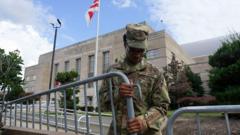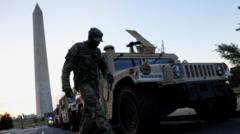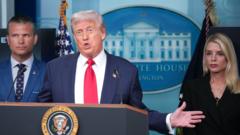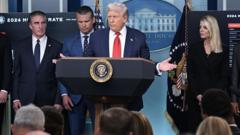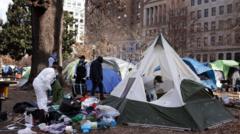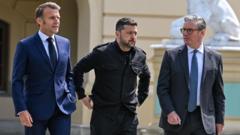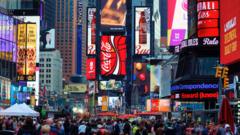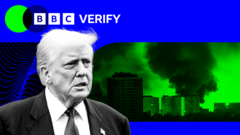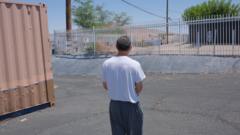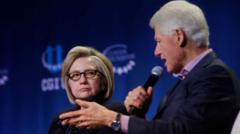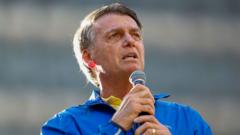The story highlights the recent enforcement of homelessness removal in Washington D.C., sparked by President Trump’s public condemnation of encampments. Bill Theodie, a homeless resident, recounts his experience after being photographed by the President and subsequently displaced, illustrating the complexities and human costs of such political decisions.
Trump’s Crackdown on D.C. Homelessness: A Personal Story Emerges

Trump’s Crackdown on D.C. Homelessness: A Personal Story Emerges
Following President Trump’s recent announcement to remove homeless encampments in Washington D.C., one man shares his experience with the impact of this policy.
In a recent event that showcases the intersection of politics and homelessness, President Donald Trump expressed his discontent with a homeless tent encampment in Washington D.C. during a motorcade ride to his golf club. Posting on Truth Social, he declared, “The Homeless have to move out, IMMEDIATELY,” accompanied by several photos, including one of resident Bill Theodie seated by his tent. This public declaration ignited immediate repercussions for the encampment.
Mr. Theodie, a 66-year-old from Missouri and a long-term resident of the area, described his astonishment at being used as a political prop without consent. Following Trump’s announcement, local authorities began a campaign to dismantle homeless communities in the capital city. "They were coming in like it was a military operation," Theodie remarked, detailing how he and others were ordered to leave almost immediately.
Upon visiting the site of the encampment, which was only a ten-minute drive from the White House, BBC Verify documented the subsequent actions taken by city officials. As reported, Theodie and his homeless neighbors, who had made efforts to keep their living area clean, were given little notice and faced the destruction of their belongings by bulldozers. "It was go, go, go," Theodie emphasized regarding the urgency of their eviction.
The homeless population in Washington D.C. is estimated to be over 5,000, with many living without shelter amidst a tightening policy landscape. Although the White House has stated that displaced individuals will be offered alternative accommodations and health services, Theodie voiced concerns that such measures could lead to threats of arrest for noncompliance. His resistance to moving into shelters stems from a fear of safety and instability within those environments.
After the encampment closure, thanks to a kind stranger, Theodie found temporary refuge in a motel but continued to express uncertainty about his future. He stated, "My best option is to try to find a safe place to set my tent up," revealing the ongoing struggles faced by those experiencing homelessness.
Similarly, other residents such as George Morgan, who has only recently joined the encampment after losing his home, shared his own challenges in navigating the sudden displacement, further emphasizing the human side of policy decisions. The details surrounding these residents unfold against a backdrop of broader debates about the effectiveness and ethics of such crackdowns on visible homelessness in urban environments.
As discussions about homelessness continue to intensify across the nation, Mr. Theodie's and Mr. Morgan's experiences serve as poignant reminders of the policy’s real-world implications, transcending mere statistics and political ideologies.



